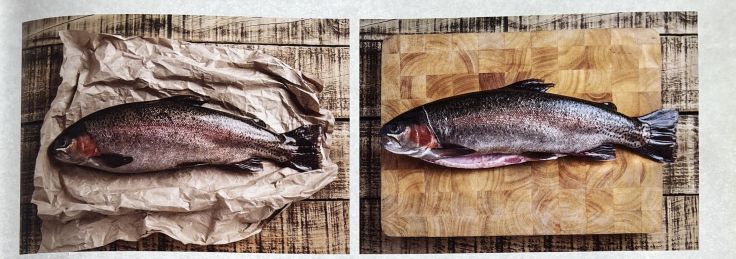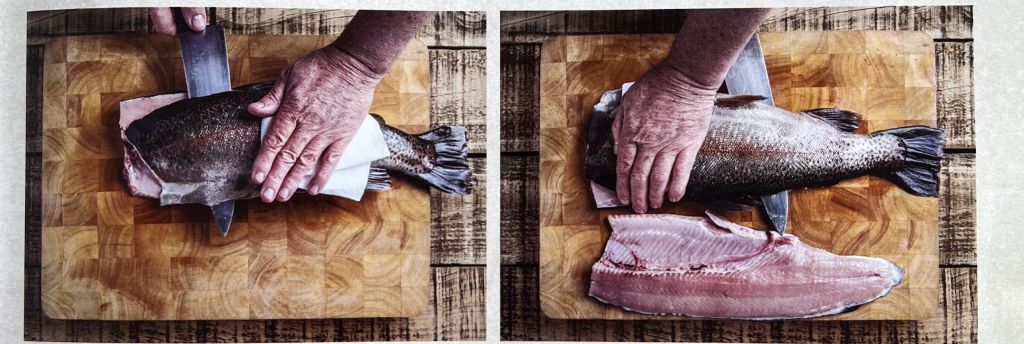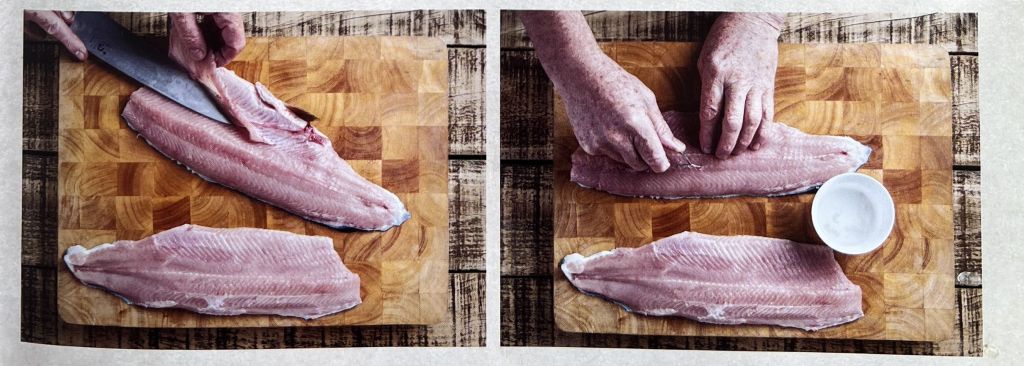Many recipes call for fillets of trout or salmon, so this is an important skill to master. Although it may seem daunting at first, with practice you will find you become more adept, with a neater result. The following is a step by step introduction to caring for your fish on the way to a delicious meal to share.

Scale the fish under a running tap either by using a scaling tool made for the task or by scraping the scales off from the tail back towards the head with your knife.
Place the fish on a chopping board. Cut off the head at the gills.
Place your free hand on the fish and keep flat with fingers raised to avoid any cuts. If it is too slippery, place a piece of cloth under your hand.
With a sharp knife, start by cutting marginally on one side of the spine bone at the head end. When the cut has started, cut flat along the length of the fish with the knife very slightly angled against the spine bone. The fine bones you will be cutting through are known as the pin bones, and we will deal with them next.
When the fillet is cut through, flip the fish over and repeat on the other side, remembering to keep your free hand flat with fingers bent upwards.

Now that the fillets are clean off the bone, carefully cut under to remove any of the rib bones left on the outer edges of the fillets. Only the pin bones remain.
The best way to remove these and keep the fillet intact is to remove each bone with a pair of small pliers. This may sound very time-consuming, but it is the only method now used in good restaurants. There is a special tool for this known as fish tweezers available at good kitchen stores.
At home I have simply washed and used a pair of fine electrician-type pliers.
Rub your finger along the fillet from the thicker end to expose the pin bones and pluck each one out with your pliers. Use a small cup of water to release the bones from your fingers. There are around 32 of these bones in each fillet, and they run from the thick end to two-thirds the length of the fillet. you have a young child who is new to eating fish. always give them a piece from the tail as there are no fine pin bones in the lower tail end of the fish.

From the book A River Rules my Kitchen, by Tony Smith
Food styling by Deborah Aspray
